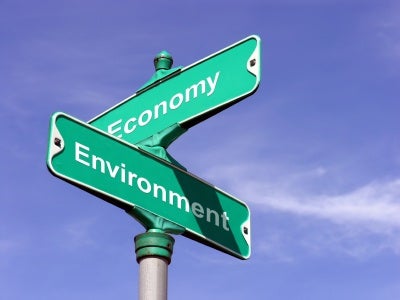In 2010, I began working on financial policy at EDF. Our objective was to implement policies that would allow private sector companies to profitably deliver financing solutions to residential and commercial property owners footing the upfront cost of money-saving energy efficiency and clean distributed generation (such as rooftop solar) projects. While the residential solar market was already gaining steam at the time, most of the other markets had very limited momentum. But after attending the clean energy finance conference that EDF co-hosted yesterday with Citi, energy efficiency solutions provider Elevate Energy, and law firm Wilson Sonsini Goodrich & Rosati, it appears that the market for financing clean energy projects is beginning to accelerate rapidly.
The agenda featured 12 private companies from the clean energy sector (Kilowatt Financial, Clean Power Finance, Renovate America, AFC First Financial Corp., Renewable Funding, Clean Fund, Joule Assets, Noesis Energy, SCIEnergy, Metrus Energy, Hannon Armstrong, and Honest Buildings), plus a few more in the audience, that are executing a wide range of transactions using Property Assessed Clean Energy (PACE), On-Bill Repayment, Energy Services Agreements (ESAs), and many other innovative techniques to fund the transition to a low-carbon economy.
There was also a lot of buzz about green banks, pools of funding managed through private-public partnerships to finance clean energy projects. Connecticut’s Clean Energy Finance and Investment Authority, which is re-branding itself as the more straightforward Connecticut Green Bank, outlined several innovative transactions that it has executed. The New York Green Bank, which recently commenced operations, also discussed their plans for growing the market. Renewable Funding’s President and CEO Cisco DeVries, who invented the concept of PACE, discussed how Hawaii’s GEMS program, the state’s version of a green bank, was planning to bring the cost-saving benefits of clean energy investments to Hawaii’s renters, small businesses, and individuals with weaker credit profiles.
Richard Kauffman, Chairman of Energy and Finance for the Cuomo administration and Chairman of New York State Energy Research and Development Authority (NYSERDA), gave the opening keynote and discussed his plans to increase clean energy investments and improve electric grid resiliency in New York. Marc Ferzan, Executive Director of the Governor’s Office of Recovery and Rebuilding, gave the lunchtime keynote on New Jersey’s plan to create the Energy Resilience Bank. He noted that this project will use many of the same techniques as the green banks but will be focused on financing microgrids, smaller versions of the main electricity grid that leverage decentralized, local, clean power sources such as solar and wind. This investment will ensure that critical public infrastructure and facilities can continue operating in the event of central grid outages. Finally, Matt Golden, EDF’s Senior Consultant, updated the group on the strong market acceptance of the Investor Confidence Project, EDF’s effort to bring transparency and accountability to the energy efficiency market by introducing a system of standardization for how financial and energy savings in retrofit projects are measured and predicted.
The conference, the third to be co-hosted annually with Citi, saw great attendance with about 240 guests. I hope we can bring the same team together again next year and look forward to seeing how the exciting, nascent clean energy finance market develops.










